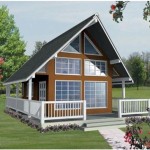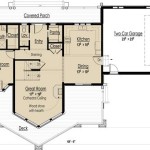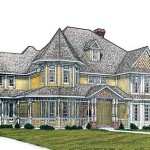Play House Plans refer to detailed blueprints, schematics, and instructions that guide the construction of playhouses, small structures designed for children’s imaginative play. These plans provide a framework for creating safe and engaging environments where children can foster their creativity, social skills, and physical development.
From simple A-frame structures to elaborate treehouses, playhouse plans cater to a wide range of designs and preferences. They typically include step-by-step instructions, materials lists, and safety considerations to ensure the playhouse is both functional and compliant with applicable building codes.
In the following sections, we will delve deeper into the benefits and considerations when using play house plans, exploring the various types available, and providing guidance on selecting the right plan for your needs.
When selecting play house plans, consider these important points:
- Safety first
- Age and ability
- Available space
- Materials and cost
- Building codes
- Imaginative appeal
- Durability and longevity
- Personalization options
By carefully evaluating these factors, you can choose the perfect play house plan to create a cherished and imaginative play space for your children.
Safety first
When it comes to play house plans, safety should be the top priority. Children will be spending countless hours playing and exploring in their playhouse, so it’s crucial to ensure that it is a safe and secure environment.
Here are some key safety considerations to keep in mind when choosing and building a playhouse:
- Materials: Choose materials that are durable, weather-resistant, and non-toxic. Avoid using treated lumber or materials that contain lead or other harmful chemicals.
- Construction: Ensure that the playhouse is structurally sound and stable. All joints should be securely fastened, and there should be no sharp edges or protruding nails.
- Location: Place the playhouse in a safe location away from hazards such as power lines, water, and busy streets. It should also be situated on level ground and have good drainage.
- Supervision: Young children should always be supervised when playing in the playhouse. Make sure that they understand the rules and safety guidelines.
By following these safety guidelines, you can create a fun and safe play space for your children.
In addition to the safety considerations listed above, there are a few other things you can do to make your playhouse even safer:
- Install safety features: Consider adding safety features such as handrails, safety netting, and non-slip flooring to prevent falls and injuries.
- Regularly inspect the playhouse: Inspect the playhouse regularly for any signs of damage or wear and tear. Make repairs as needed to ensure that it remains safe for use.
- Teach children about safety: Teach your children about the importance of safety when playing in the playhouse. Show them how to use the equipment safely and supervise them when they are playing.
Age and ability
When choosing play house plans, it is important to consider the age and ability of the children who will be using it. Different ages and abilities require different design features and safety considerations.
Toddlers (1-3 years old): Playhouses for toddlers should be simple in design and focus on safety. Avoid plans with complex features or multiple levels. Instead, choose plans with low platforms, wide openings, and gentle slopes. Safety features such as handrails and non-slip flooring are also important.
Preschoolers (3-5 years old): Preschoolers are more active and imaginative than toddlers, so their playhouses can be more complex. Plans with multiple levels, slides, and other interactive features are good choices for this age group. However, safety should still be a top priority, so choose plans that are sturdy and well-constructed.
School-age children (6-12 years old): School-age children are more independent and can handle more complex playhouses. They may enjoy plans with multiple rooms, lofts, and other features that allow for imaginative play. Safety is still important, but school-age children can generally handle more challenging play structures.
In addition to age, it is also important to consider the abilities of the children who will be using the playhouse. Children with disabilities or special needs may require modifications to the plans to ensure that they can safely and fully enjoy the playhouse.
Available space
The available space in your yard will play a major role in determining the size and type of playhouse you can build. Before you start looking at play house plans, take some time to measure the available space and consider the following factors:
- The size of the playhouse: The size of the playhouse will depend on the number of children who will be using it and the activities they will be doing. A small playhouse may be sufficient for toddlers, while a larger playhouse will be needed for older children who want to have more space to play and explore.
- The shape of the playhouse: The shape of the playhouse will also affect the amount of space it takes up. A rectangular playhouse is a good choice for small spaces, while a more elaborate playhouse with multiple levels and rooms will require more space.
- The location of the playhouse: The location of the playhouse will also affect the amount of space it takes up. If you have a small yard, you may want to place the playhouse in a corner or against a fence. If you have a larger yard, you can place the playhouse in a more central location.
- The access to the playhouse: Make sure that there is enough space around the playhouse for children to enter and exit safely. You should also leave enough space for adults to supervise children and to perform maintenance on the playhouse.
Once you have considered all of these factors, you can start to narrow down your choices for play house plans. Keep in mind that you can always modify the plans to fit your specific needs and space constraints.
Materials and cost
The materials you choose for your playhouse will have a significant impact on its cost and durability. Here are some of the most common materials used to build playhouses, along with their pros and cons:
- Wood: Wood is a popular choice for playhouses because it is relatively inexpensive, easy to work with, and durable. However, wood requires regular maintenance to protect it from rot and insects.
- Plastic: Plastic playhouses are durable, weather-resistant, and easy to clean. However, they can be more expensive than wood playhouses and can become hot in the sun.
- Metal: Metal playhouses are very durable and weather-resistant. However, they can be more expensive than wood or plastic playhouses and can rust if not properly maintained.
- Composite materials: Composite materials are made from a combination of wood and plastic. They are durable, weather-resistant, and easy to maintain. However, they can be more expensive than wood or plastic playhouses.
In addition to the materials, you will also need to factor in the cost of hardware, paint, and other supplies. The total cost of your playhouse will vary depending on the size, complexity, and materials used.
Building codes
Building codes are regulations that govern the construction of buildings and other structures. These codes are in place to ensure that buildings are safe and habitable. Playhouses are typically not required to meet the same building codes as houses and other permanent structures. However, there are some general building codes that may apply to playhouses, depending on their size, complexity, and location.
One of the most important building codes to consider when building a playhouse is the local building code. Local building codes vary from place to place, so it is important to check with your local building department to see what codes apply to playhouses in your area. Local building codes may regulate the size, height, and location of playhouses. They may also require playhouses to have certain safety features, such as handrails and guardrails.
In addition to local building codes, there are also national building codes that may apply to playhouses. The International Residential Code (IRC) is a national building code that is used in many states and municipalities. The IRC regulates the construction of residential buildings, including playhouses. The IRC requires playhouses to meet certain safety standards, such as having a sturdy foundation, being properly anchored, and having safe stairs and railings.
If you are planning to build a playhouse, it is important to check with your local building department to see what building codes apply. Building codes can vary from place to place, so it is important to make sure that your playhouse meets the codes in your area. Failing to meet building codes can result in fines or even having toyour playhouse.
In addition to building codes, there are also other safety considerations to keep in mind when building a playhouse. For example, you should make sure that the playhouse is located in a safe area away from hazards such as power lines and water. You should also make sure that the playhouse is properly anchored so that it does not tip over in high winds. By following these safety guidelines, you can help to ensure that your playhouse is a safe and enjoyable place for your children to play.
Imaginative appeal
One of the most important things to consider when choosing play house plans is the imaginative appeal of the playhouse. The playhouse should be a place where children can let their imaginations run wild and create their own worlds. It should be a place where they can pretend to be anything they want to be and do anything they want to do.
There are many different ways to create a playhouse that is imaginative and appealing to children. One way is to choose a playhouse plan that has a unique and whimsical design. A playhouse that looks like a castle, a treehouse, or a spaceship will be much more appealing to children than a plain and ordinary playhouse. Another way to create a playhouse that is imaginative and appealing is to add special features, such as a slide, a swing, or a climbing wall. These features will give children more opportunities to play and explore, and they will help to keep them entertained for hours on end.
When choosing play house plans, it is also important to consider the age and interests of the children who will be using the playhouse. Younger children may prefer playhouses that are simple and easy to navigate, while older children may prefer playhouses that are more complex and challenging. It is also important to consider the children’s interests when choosing a playhouse theme. For example, if the children love to play pretend, they may prefer a playhouse that is themed like a castle or a grocery store. If the children love to be active, they may prefer a playhouse that has a slide or a climbing wall.
By considering the imaginative appeal of the playhouse, you can choose a playhouse plan that will provide children with hours of fun and imaginative play.
In addition to the factors discussed above, there are a few other things you can do to make your playhouse more imaginative and appealing to children:
- Add some personal touches: Let the children help you to decorate the playhouse and add their own personal touches. This will make the playhouse feel more like their own special place.
- Provide plenty of props and accessories: Provide the children with a variety of props and accessories, such as dress-up clothes, toys, and books. This will give them more opportunities to play and explore their imaginations.
- Encourage imaginative play: Encourage the children to use their imaginations when playing in the playhouse. Ask them questions about what they are pretending to be and what they are doing. This will help them to develop their imaginations and creativity.
Durability and longevity
When choosing play house plans, it is important to consider the durability and longevity of the playhouse. You want to choose a playhouse that will withstand the elements and last for many years to come. Here are a few things to consider when evaluating the durability and longevity of play house plans:
- Materials: The materials used to build the playhouse will have a significant impact on its durability. Choose materials that are weather-resistant and durable, such as wood, plastic, or metal. Avoid using materials that are prone to rot, rust, or fading.
- Construction: The construction of the playhouse will also affect its durability. Make sure that the playhouse is well-built and sturdy. The joints should be securely fastened, and the roof should be able to withstand wind and rain. The ladder and stairs should be sturdy enough to support the weight of multiple children, and the slides should be safely attached to the stairs.
- Location: The location of the playhouse will also affect its durability. Choose a location that is well-drained and protected from the elements. Avoid placing the playhouse in a low-lying area where it may be prone to flooding. Also, avoid placing the playhouse under trees, as falling branches could damage the playhouse.
- Maintenance: The durability of the playhouse will also depend on how well it is maintained. Regularly inspect the playhouse for any signs of damage, and make repairs as needed. Clean the playhouse regularly to remove dirt and debris. By following these tips, you can help to ensure that your playhouse will last for many years to come.
In addition to the factors listed above, there are a few other things you can do to increase the durability and longevity of your playhouse:
- Use high-quality materials: When building your playhouse, use high-quality materials that are designed to withstand the elements. This will help to ensure that your playhouse will last for many years to come.
- Build the playhouse on a solid foundation: A solid foundation will help to protect the playhouse from the elements and prevent it from sinking or shifting. You can build the foundation out of concrete, gravel, or pavers.
- Regularly maintain the playhouse: Regularly inspect the playhouse for any signs of damage, and make repairs as needed. Clean the playhouse regularly to remove dirt and debris. By following these tips, you can help to ensure that your playhouse will last for many years to come.
Personalization options
One of the great things about play house plans is that they can be easily personalized to fit your child’s unique needs and interests. Here are a few ideas for personalizing your playhouse:
Choose a playhouse plan that fits your child’s age and interests: There are many different playhouse plans available, so you can choose one that is appropriate for your child’s age and interests. For example, if your child is younger, you may want to choose a playhouse plan that is simple and easy to navigate. If your child is older, you may want to choose a playhouse plan that is more complex and challenging.
Add personal touches to the playhouse: Once you have chosen a playhouse plan, you can start to personalize it to fit your child’s unique style. You can paint the playhouse your child’s favorite color, add their name to the door, or decorate it with their favorite characters. You can also add personal touches to the inside of the playhouse, such as adding a chalkboard wall or a play kitchen.
Make the playhouse a special place for your child: The playhouse should be a place where your child feels comfortable and creative. Encourage your child to use their imagination when playing in the playhouse. You can also provide them with props and accessories to help them create their own worlds. By making the playhouse a special place for your child, you will help them to develop their imagination and creativity.
In addition to the ideas listed above, there are a few other things you can do to personalize your playhouse:
- Add a slide or a swing: A slide or a swing is a great way to add some extra fun to your playhouse. You can purchase a slide or a swing separately, or you can build one yourself.
- Add a sandbox: A sandbox is a great way for children to play and explore. You can add a sandbox to your playhouse by digging a hole in the ground and filling it with sand.
- Add a garden: A garden is a great way to teach children about nature and where food comes from. You can add a garden to your playhouse by planting flowers, vegetables, or herbs.










Related Posts








